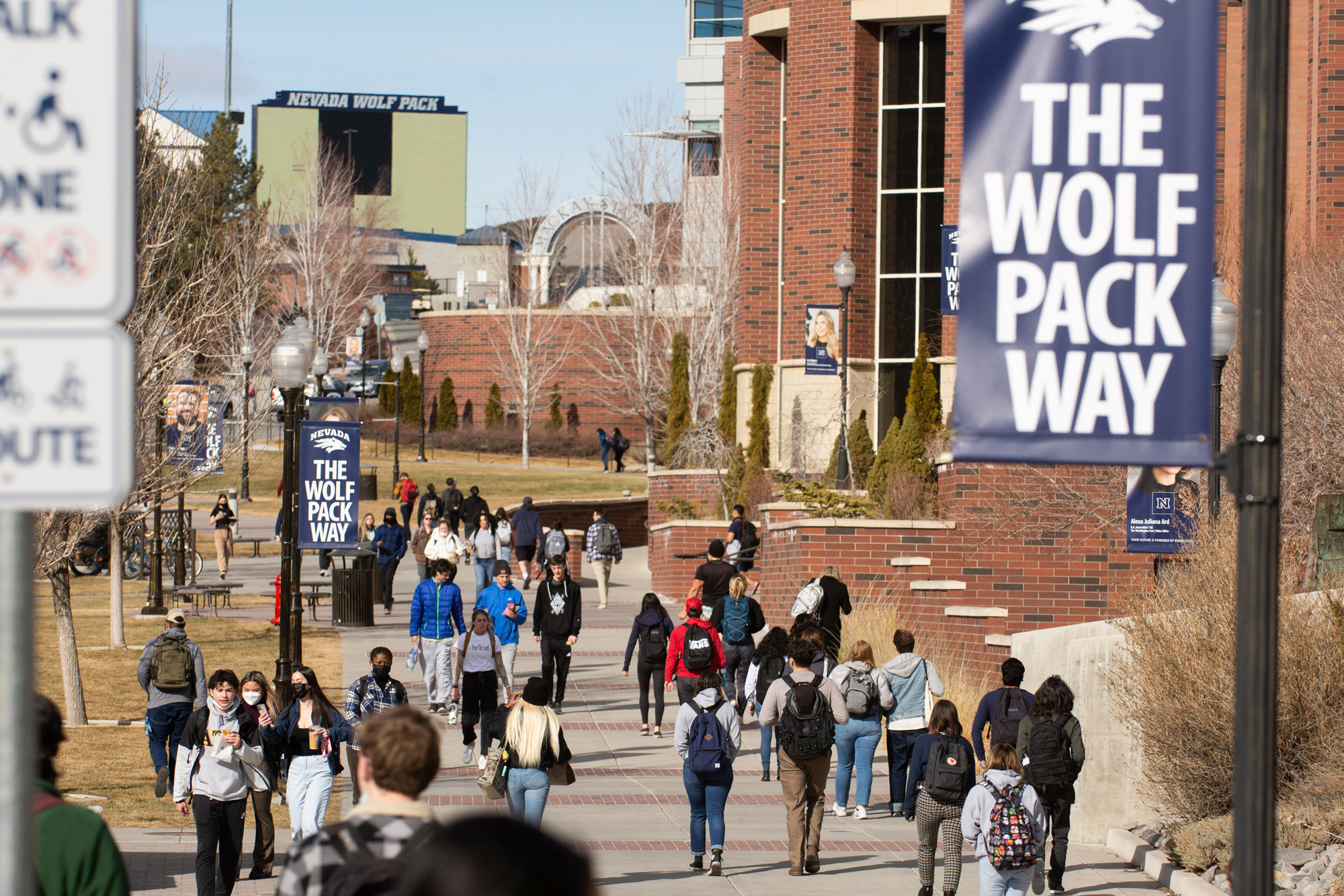New rules ease fears that Nevada universities could lose coveted ‘R1’ status

Dramatically simplified guidelines published last week by the groups that effectively designate the country’s top research universities could virtually guarantee that UNR and UNLV maintain their desired “R1” status — even as budget woes have forced institutional cuts across the Nevada System of Higher Education (NSHE) this fall.
In announcing the new rules, the American Council on Education (ACE) and the Carnegie Foundation argued the new system was designed for clarity and transparency, ending a sprawling 10-criteria matrix for judging research and adding new “multidimensional” categories aimed at better reflecting differences between groupings of similar institutions.
The Carnegie Research Classifications’ top rating — R1, or “very high research activity” — is among the most sought-after designations for research institutions nationwide, widely seen by administrators as a marker of institutional success and as a valuable tool in recruiting top-flight faculty and students.
Both Nevada research universities received the R1 designation in 2018, though only after a slight shift in the way Carnegie classified research activity. Both later held on to the rating after a new round of classifications in 2021, and the next set of classifications will come in early 2025.
Under the new framework, institutions will be granted R1 status solely on two metrics: whether they spend at least $50 million annually on research, and whether they graduate at least 70 doctoral students per year.
UNR and UNLV easily clear both hurdles. UNR spent $182 million in the last fiscal year on research and had 190 research doctorates. UNLV spent nearly $100 million and had 250 doctorates.
Asked for his reaction, UNLV Provost Chris Heavey had one word: “Delighted.”
“I'm really happy that they clarified the criteria and simplified them to focus on the core of what it means to be a research university,” Heavey said in an interview last week.
Heavey called the changes “dramatically clearer,” functionally doing away with a long-held practice at the country’s top research universities of committing to “some archeology” to obtain or maintain their R1 ratings.
“The previous formula was so complex and multifaceted that once people had reverse engineered how it was working, it created perhaps a perverse incentive to make some kinds of decisions within institutions for the purpose of improving those metrics,” Heavey said.
Still, university administrators told The Nevada Independent that the new-look guidelines may yet require additional tweaks and clarifications ahead of the next round of research university classifications expected in early 2025.
“Simplified, but a little confusing,” Mridul Gautam, UNR’s vice president for research and innovation, said of the new rules. “The whole picture wasn’t painted [in the announcement]. [ACE] did say that some of these things may have to be revisited.”
Gautam said the new rankings were only part of the puzzle when it comes to competing with the country's top universities. Funding and research expenditures, he said, were “lagging indicators.” Leading indicators, by contrast, came from infrastructure and resources, reducing administrative burdens — all costing a fair amount more than the new R1 threshold.
“We're not going to stop at $50 million; $50 million doesn't help us maintain the lab infrastructure,” Gautam said. “I like to see ourselves competing with the best out there. So in my view, yes, it was still a big deal, and how far above you are from the threshold will matter.”
The rules clarification comes at a time when institutions statewide are expecting to slash department budgets and eyeing continued positional vacancies or cuts to save costs. As enrollment growth has slowed, institutions have struggled to finance a historically large cost-of-living adjustment for faculty — one lauded by faculty who have long criticized stagnant salaries, but one that was only partially funded by state lawmakers.
For research programs, access to federal grants and industry dollars tilts needs away from state money — the budget calculus differs from more teaching-heavy departments. Gautam pointed in particular to the potential to acquire more industry funding, which has far outpaced government research spending over the past few decades.
Heavey said the new Carnegie simplifications put UNLV “so far over those lines, we’ve got no worries” about maintaining R1 status. Still, he said, the broader budget turmoil has put Nevada higher education in a position in which “all of the institutions in the state will say that they’re struggling.”
“I don't want to pit the research universities against community colleges and the state university because I think everyone is in a tough spot at this moment,” Heavey said. “But I would say all of us are hoping for some additional investment in higher education in Nevada.”
